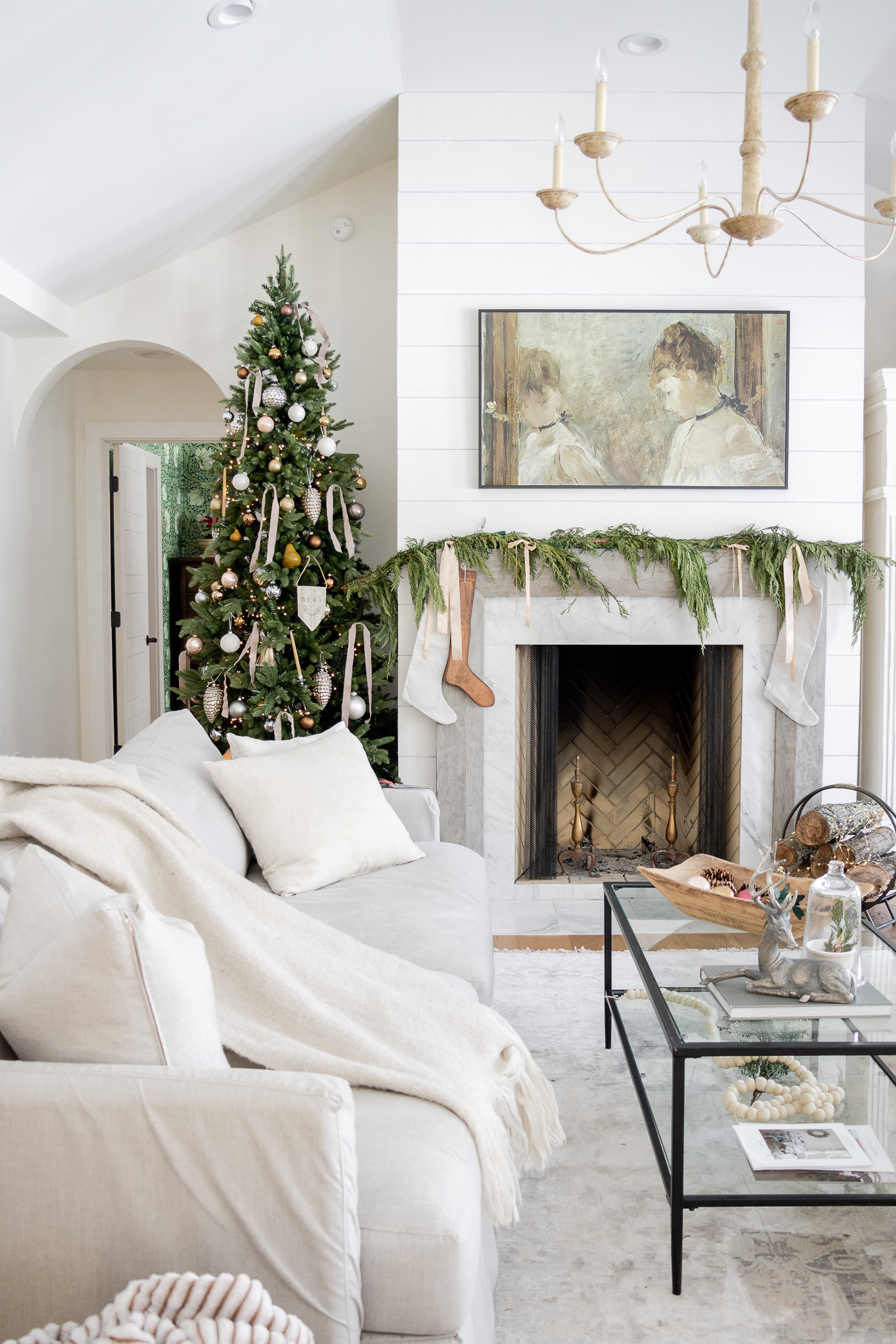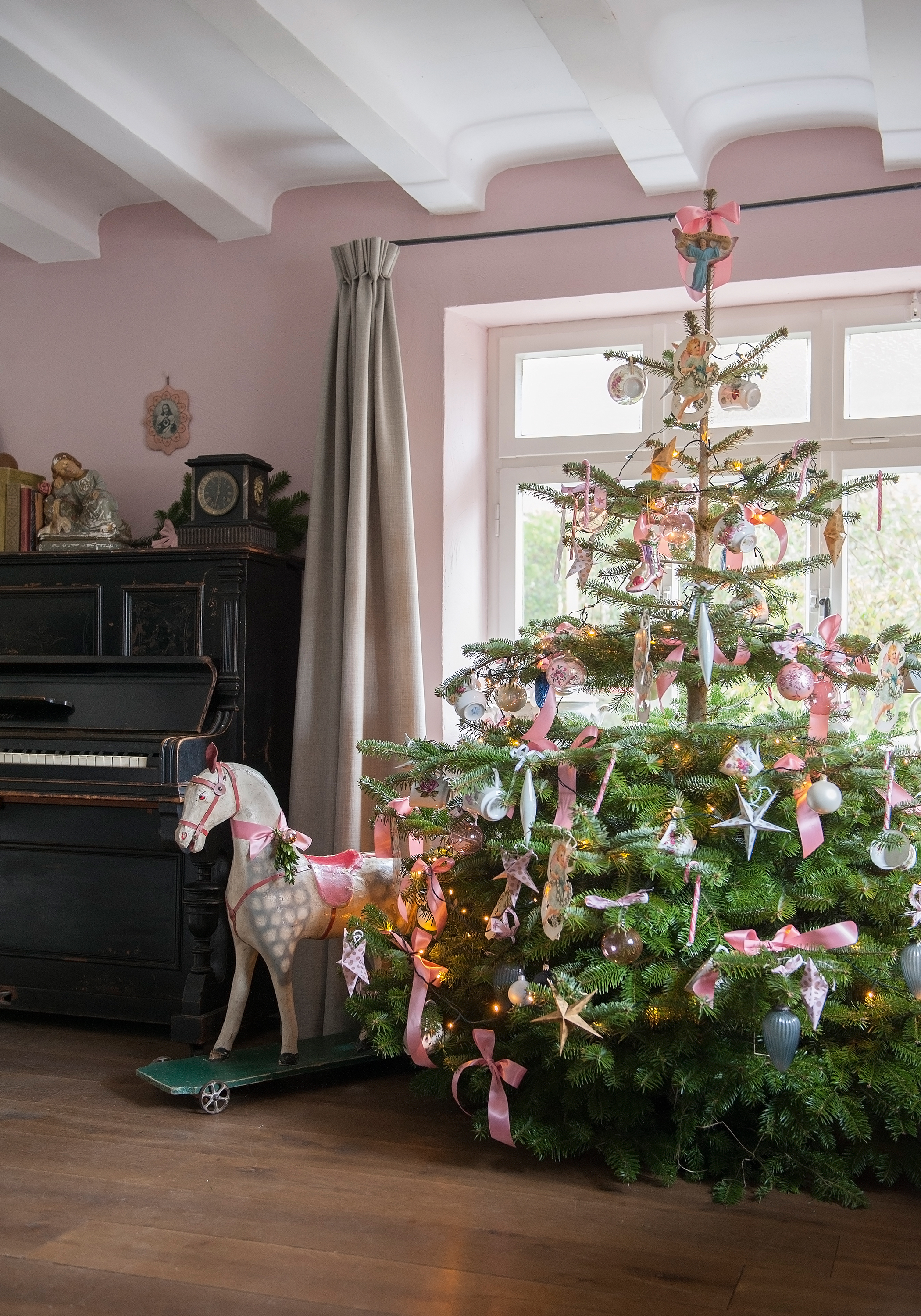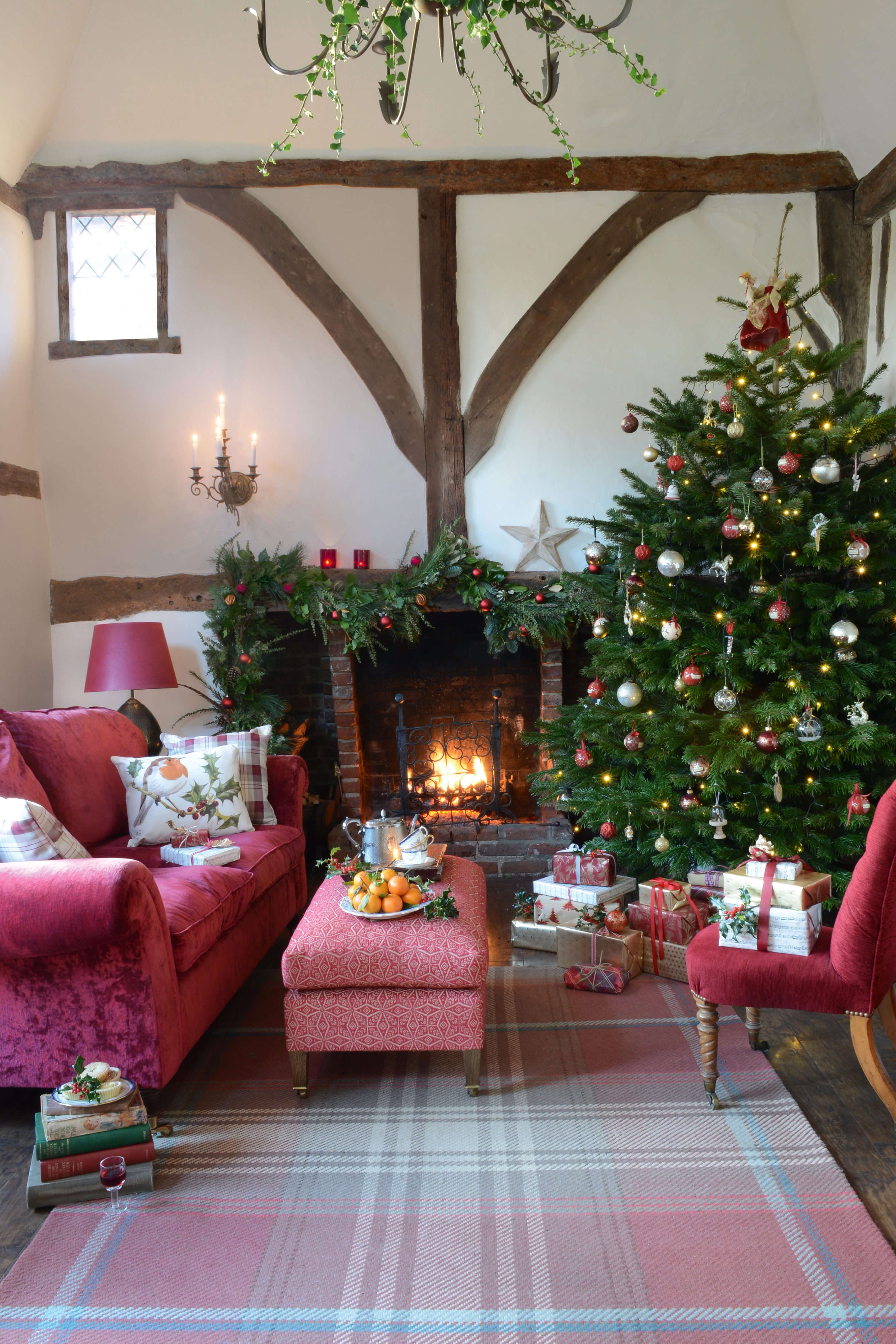How to choose a Christmas tree – that will last all of Christmas
Figuring out how to choose a Christmas tree is a breeze with this in-depth advice

It's important to find out how to choose a Christmas tree but it can be quite a task. With so many trees to choose from, how do you make sure you pick the one that will last throughout the festive season and will look perfect in your living room?
Before researching Christmas tree decorating ideas, it makes sense to get a thorough grounding in choosing the best Christmas tree. We've all come home with a tree that's lopsided, too tall/too short, or just doesn't have that sumptuous, fluffy look we all want. For decorations to look good on a tree, it has to be a good tree.
With this advice, you'll know exactly what to look for – and what to avoid when shopping for your festive fir.

How to choose a Christmas tree
1. Take measurements before buying your Christmas tree
You probably already know where your Christmas tree will go (same room as every year, right?), but is it the best place? Your Christmas tree is supposed to be the centerpiece of the room where you all gather on Christmas Day, but does that mean it's too close to a fire, blocking an entrance or overwhelming the space? If you ticked 'yes' to one of these questions, it might be worth a rethink.
Once you have settled on a location and before you pick out (or haul the tree from the loft), measure the height, width and depth of the space. Your tree should be at least half a foot shorter than the ceiling to allow clearance for the topper – no one likes a squashed fairy. Allow, too, for space around the tree so that it is not pushed up against the walls or furniture. Slim trees are ideal for narrow spaces, but don't go for anything too spindly, especially if you want an authentic look.
Christmas tree expert Mary Dimitrova from Fantastic Services also reminds Christmas tree shoppers that they should 'include the height of the tree stand in the overall height. Doing this step before going to buy a tree will massively reduce the stress of picking the perfect tree.'
2. Pick the right type of real Christmas tree

Christmas trees come in a variety of shapes, shades of green, feel of needles, and other characteristics. If you're after a specific look and feel, it's worth doing your research before tracking down the specific tree type you want.
Get small space home decor ideas, celeb inspiration, DIY tips and more, straight to your inbox!
Nordmann fir (Abies nordmanniana)
Since the 1990s, the Nordmann fir, with its highly acclaimed ‘non-drop’ needles, has become a bestseller. It remains a more expensive option on account of the time it takes to grow, but with its citrus smell, and lovely soft needles, it is a great option for families with young children. The reliably triangular shape tends to be slightly more open and less dense than Norway spruce, so it is ideal for those who prefer baubles and other hanging decorations aplenty.
Norway spruce (Picea abies)
The triangular shape, dark green needles, gently drooping branches, and distinctive ‘pine’ fragrance of the Norway spruce are the very essence of Christmas, and its dense bushy shape is excellent for decorating. It is also quite cheap when compared to other options. It does tend to shed its needles quite freely, however, particularly as the festive season progresses. Offset this by bringing it inside later than other varieties; keep it well watered and away from direct heat sources.
Blue spruce (Picea pungens)
Related to the Norway spruce, this is one of the most attractive Christmas trees, with a good natural shape, and distinguished by the striking blue-green – sometimes almost electric blue – needles. These are very sharp, however, so take care when handling it. Although its foliage is slower to drop than that of the Norway spruce, it is not a non-drop option. It does have a wonderfully distinctive ‘pine’ scent, and is so attractive that it commands attention even before it has been decorated.
Noble fir (Abies procera)
Noble fir is a native of the forests of Washington and Oregon, where it grows to a great height. Although it is thick-stemmed, which can make it difficult to use with a tree stand, it has lovely, well-spaced foliage.
Fraser fir (Abies fraseri)
The blue-green Fraser fir is very popular in the eastern United States, and its narrower shape makes it ideal for smaller spaces. With dense foliage, it’s not ideal for bauble devotees, but with a minimalist approach, and plain lights, it can make a wonderful centrepiece.
And once you have picked your fave style of real Christmas tree, head over to our guide to how to decorate a Christmas tree like a pro.
3. How to test if your real Christmas tree is fresh

The trick for knowing if your real Christmas tree is fresh is looking out for a healthy, shiny appearance. The needles should be flexible and not fall easily.
Check this by dropping lightly on its stump. Evergreens lose needles all year, but if it drops more than a few, it is not fresh. Compare the weight with similar-sized trees; good quality trees will be heavier.
A heavier tree means that it is hydrated. Aim to buy, or collect, your tree no more than four weeks before Christmas Day, but leave it outdoors until two or three weeks before at least, (if you want to keep it at its maximum freshness).
4. How to maintain a real Christmas tree

Once you have the tree home, cut approximately a half an inch to an inch off the stump using a handsaw, like this from Target, before standing it in a pail of fresh water, in a cool, shaded area. When it is brought indoors, mount the tree in a water-holding stand, and place away from any heat source, such as a radiator.
Once it is unwrapped, allow the branches to settle before decorating them. Keep the container regularly topped up with water, as the tree will consume a surprising amount. This will help it to maintain its sheen and needles.
As with any Christmas tree, delay as long as possible before bringing living trees indoors. Aim to keep them in the house for no longer than 12 days, but be guided by the tree – if it looks unhappy, then put it back outside.
5. How to recycle a real Christmas tree
Most local authorities run a tree recycling service – consult your local city authority for recycling options. They should recycle the trees free of charge. Alternatively, cut up the wood and season it for at least a year to use as firewood, or chip it to use on garden borders.
6. Re-planting your real Christmas tree
If a live tree to plant afterwards is what you’re looking for, go for a pot-grown version. For this, there are essentially three main types:
Bare root
These are trees that have been prepared so that they can be dug up, ideally with a full root system. In practice, this is often difficult to do and, because they have no soil around the roots, the trees must be freshly harvested. Bare root trees still need potting up and, although they remain fresher than a cut tree, usually have only a slim chance of re-establishment if planted in the ground after Christmas.
Potted
If you see trees described as ‘potted’, this simply means they have been lifted from the ground (usually as bare root stock) and plunged into a pot; the chances of root damage are high, and survival low.
Pot grown
Having spent most, if not their entire, lifespan in a pot, these trees come with a good root system. As long as they are kept cool and the compost damp, they should survive the rigours of Christmas and are the best option if you intend to keep or establish them in the garden. They are usually quite small specimens (seldom more than one metre) and can be more expensive.
After Christmas, pot-grown trees can either be planted out with a very good chance of success, or left to grow on in the pot. If choosing the latter option, re-pot the tree into a larger pot in late winter, using a soil-based potting compost. This can be done annually, until the tree reaches the maximum size that can be moved comfortably.
If planting the tree in the ground, acclimatise it first in a sheltered spot and keep it well watered. Most Christmas tree species ultimately grow to form very large specimens, frequently reaching a height of about 15m to 20m within 20 years.
What type of real Christmas tree lasts the longest?
Christmas tree expert Mary Dimitrova particularly recommends a Douglas or a Nordmann Fir for longevity – 'they'll last for about six weeks before withering, offering the best use throughout Christmas.
Of course, that depends on how well you care for it but lowering the temperature in the room really slows down the drying process and keeps your tree fresher for longer.' With the correct care, you can pick whichever tree you like best.
Are Christmas trees sustainable?
A responsibly-sourced real tree is carbon neutral, taking as much carbon dioxide from the environment as its production and transportation creates. Christmas tree farmers also plant a sapling in the place of every felled tree, and don't forget that a used tree can be recycled. If you're looking for a good green option (in more ways than one) then the suggestion is to buy directly from the grower (if you can)! This means you won't have to add transportation to the seller into the tree's carbon footprint.
An eco-friendly Christmas tree should be farmed in such a way that it has a positive impact on the surrounding environment.
In the US, the National Christmas Tree Association provides a handy amp that locate a registered grower near your location.
In the UK, the equivalent body is the British Christmas Tree Growers Association. Members of the BCTGA have strict guidelines to follow on where they buy their seeds, what pesticides and herbicides to use, and how to harvest their trees. Where the use of pesticides is unavoidable, farmers will use chemicals early in the year when wildlife and insects haven't moved into the forests.
Only a small percentage of a Christmas tree farm is felled every year. This means that there is a constantly changing but permanent eco-system in which British wildlife can thrive. One condition of a BCTGA membership is that trees can’t be felled if there are animals nesting in them. As all felling occurs close to Christmas, it is very rare that it impacts upon the resident wildlife or the farm production itself.
A real Christmas tree needs to be transported from farm to house, so even if grown locally, it will still have a small carbon footprint. Always check that the tree you're buying was grown locally rather than imported.
Another option that's recently become a thing? Renting a real Christmas tree – it comes in a pot so you just have to take care of it while it's in your home; it's then returned after Christmas... until next year.